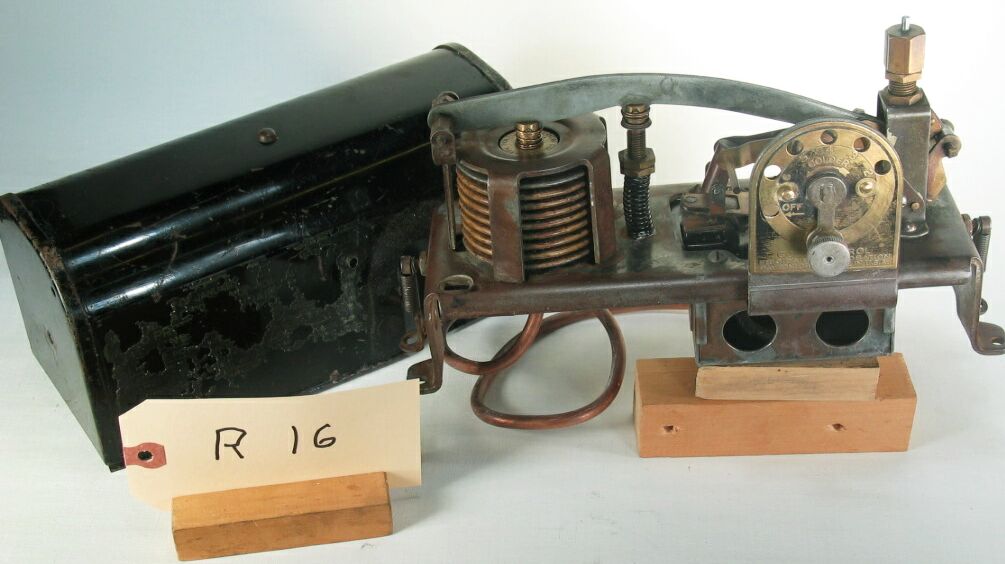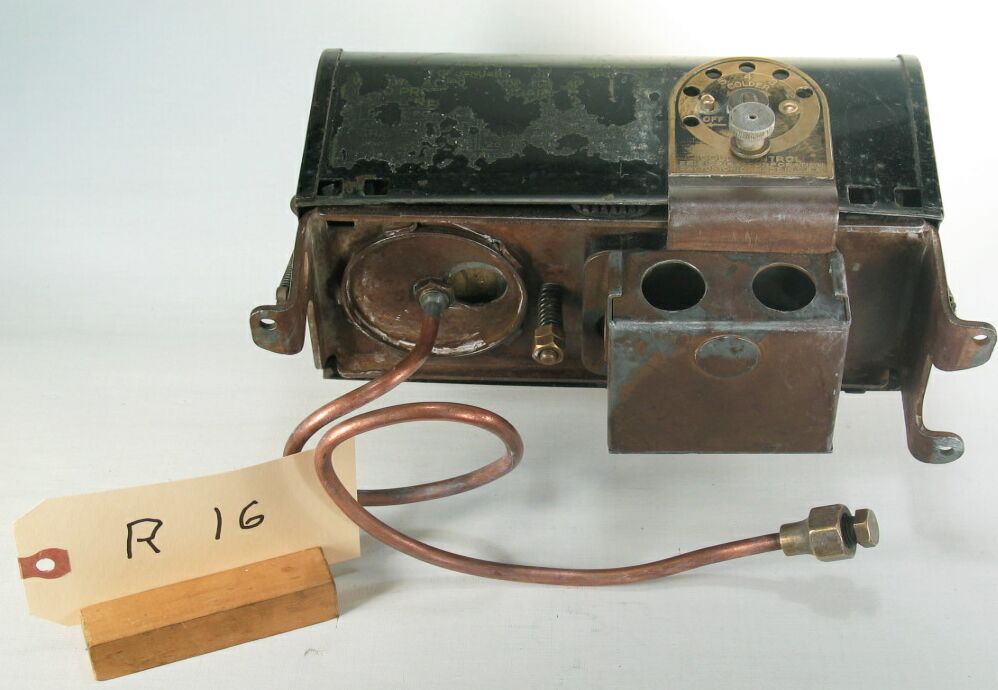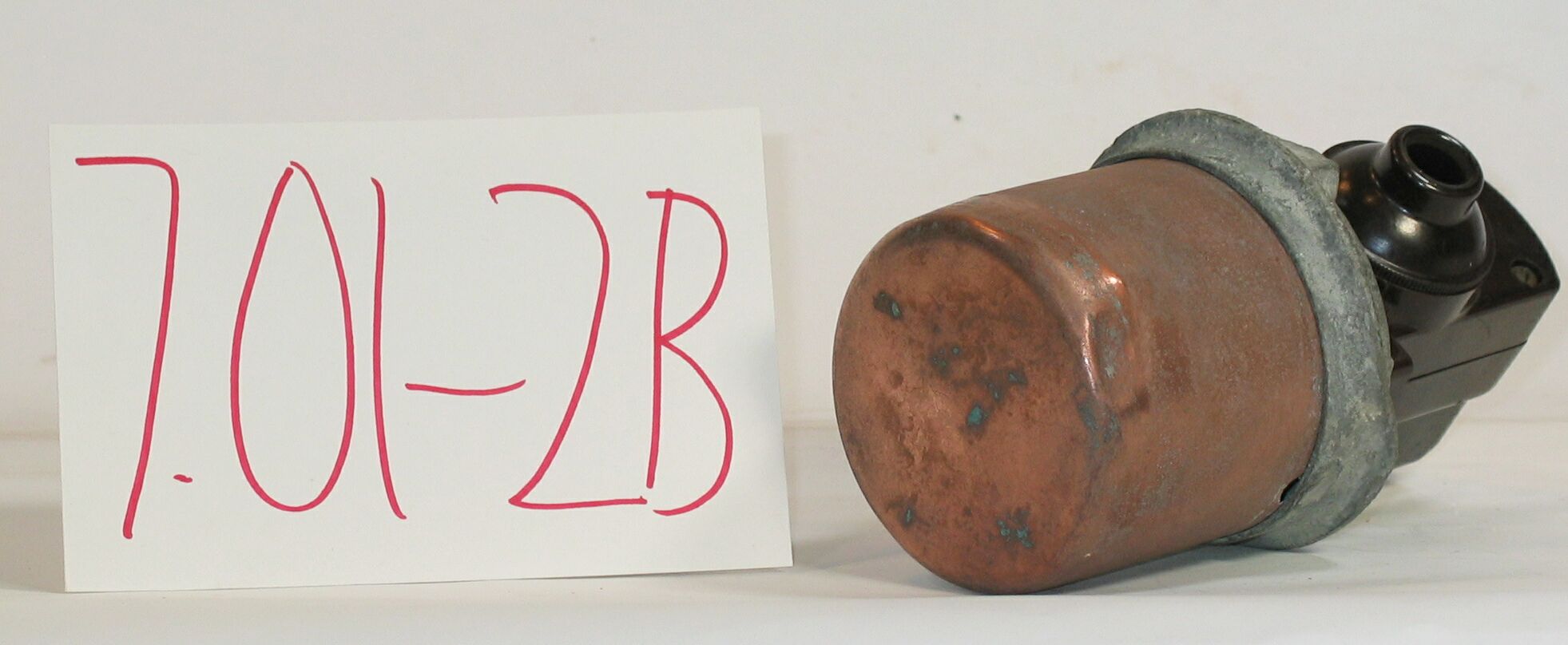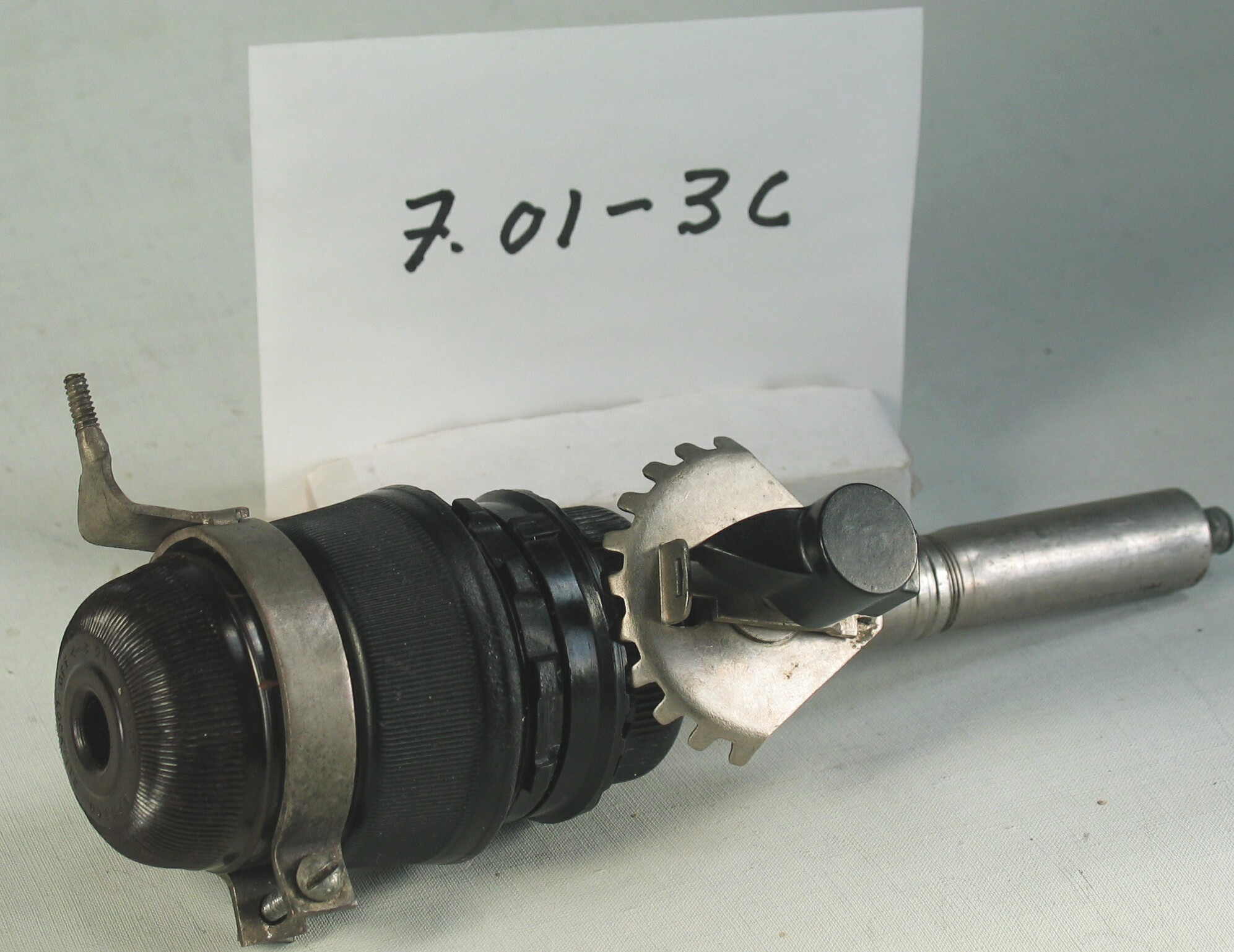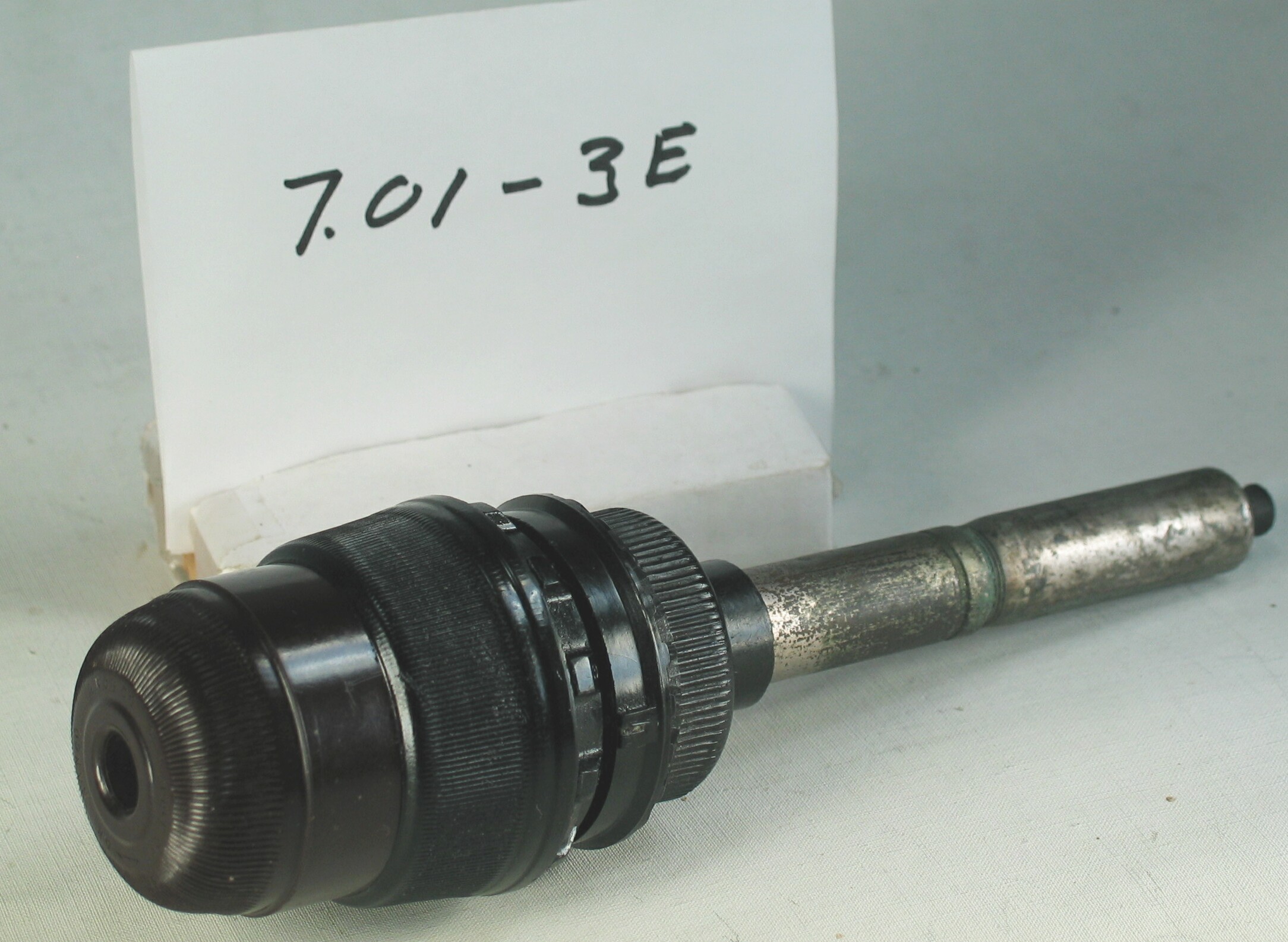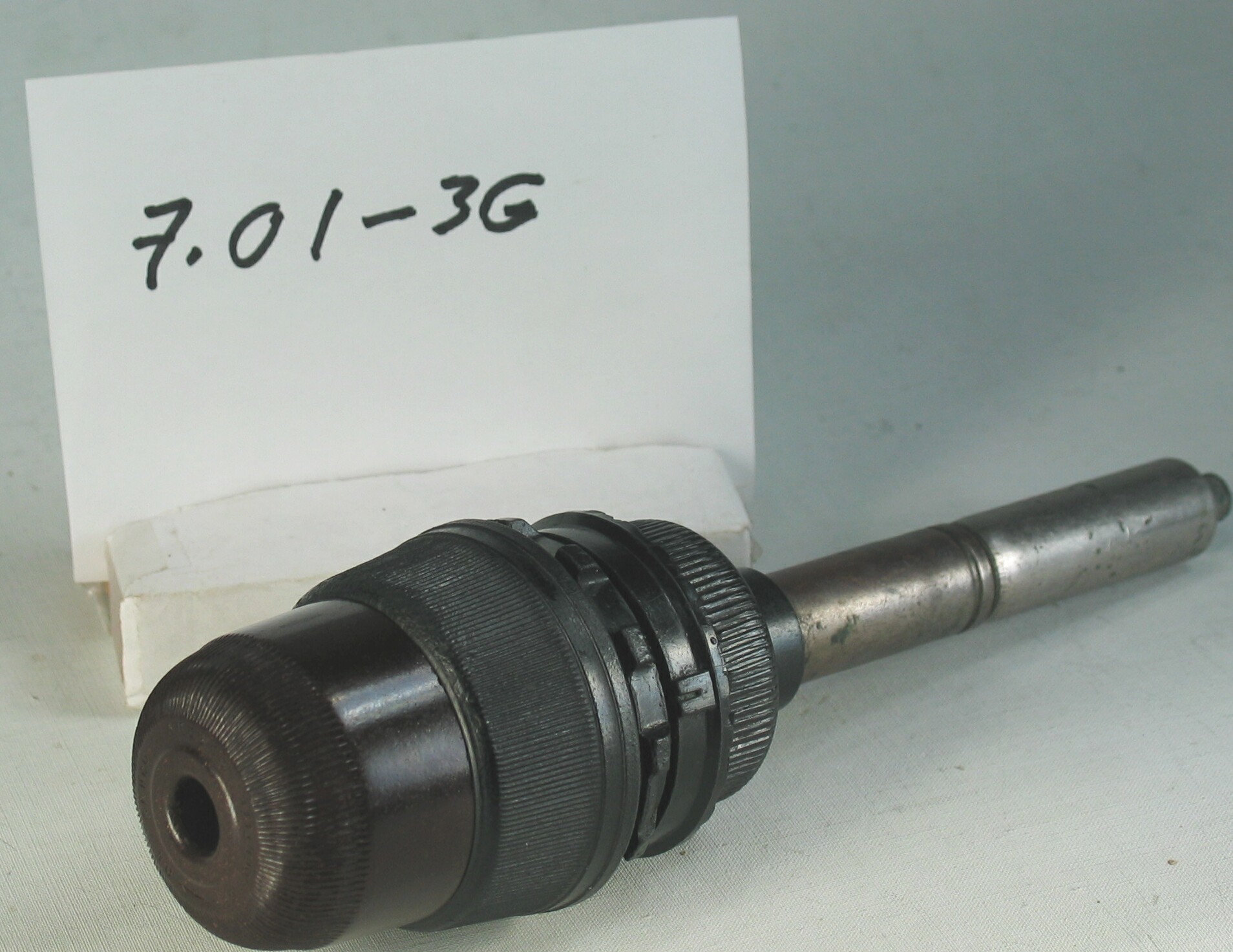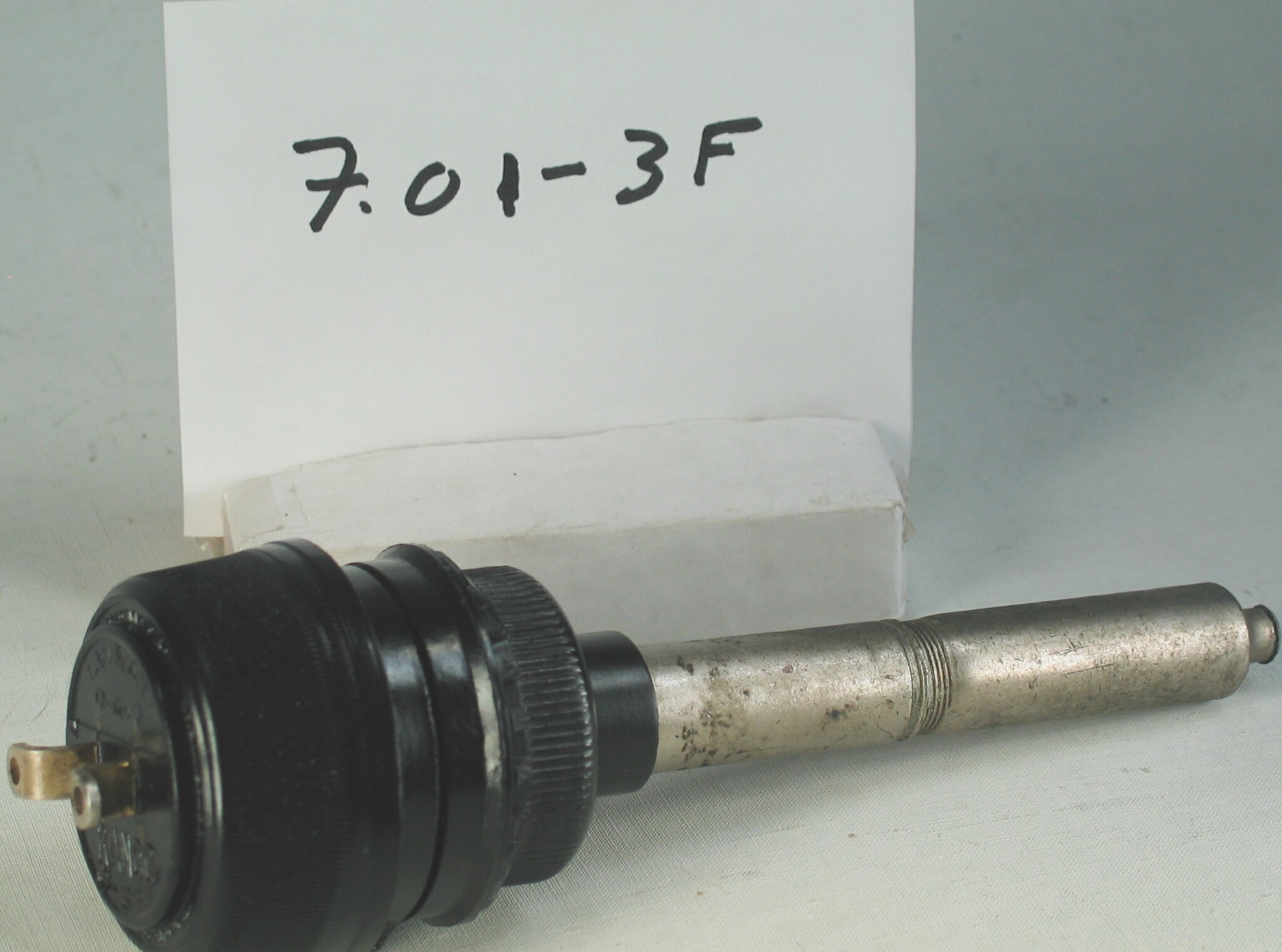7.01-2F: Kelvinator 1925 Automatic Temperature Control
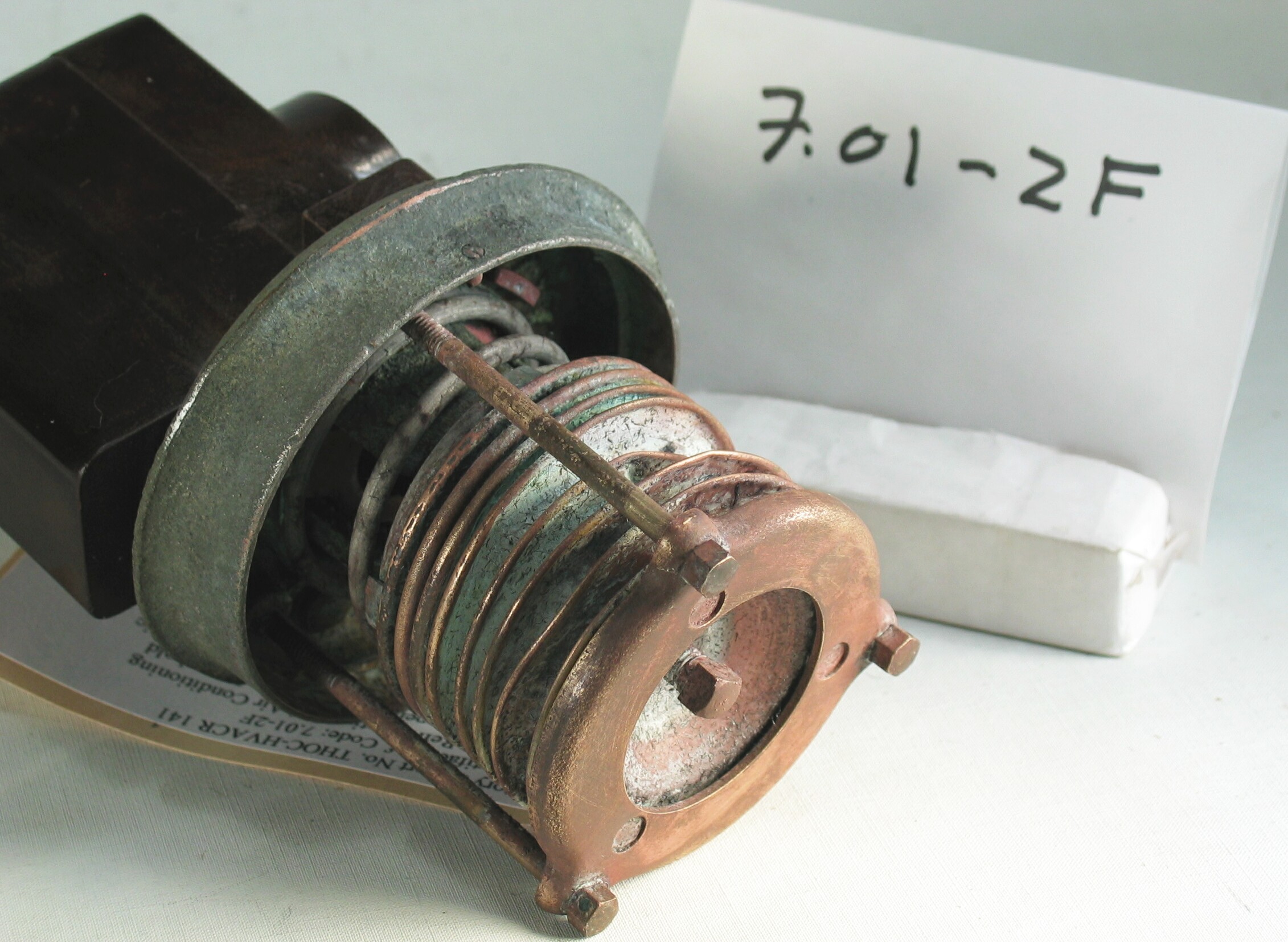
| HHCC Accession No. 2006.017 | HHCC Classification Code: 7.01-2F |
|---|
Description:
An early, hydraulic bellows actuated, automatic temperature control [thermostat] with fixed factory setting, senses evaporator suction line temperature. Shown with collapsed and distorted bellows and fully extended compensating pressure spring. Likely an early Model E, as suggested by the absence of bellows immersion cup, Kelvinator of Canada, London, Ont. Circa 1924.
One of a rare matched set of six Kelvinator Model E thermostats profiling the evolution of one of the earliest commercially marketed, self-regulating, temperature sensing, electric motor control devices. The mode was offered by Kelvinator in various forms from 1923 through to about 1927. The set profiles: 1) the progressive design modifications made to improve performance, 2) something of the expected life expectancy of the technology in use, 3) the often precipitous modes of failure, anticipated by the refrigeration service man of the period, and 4) various stages of physical deterioration, as a result of natural use, misuse and abandonment. See numbers 7.01-2A, B, C, D, E, F.; ID # 129, 130, and 138 to 141
Group:
7.01 Refrigerating and Air Conditioning Pressure and Temperature Controls - Household
Make:
Kelvinator
Manufacturer:
Kelvinator, Detroit Michigan, Div of Electric Refrigeration Corp. / Kelvinator of Canada Ltd, London Ont.
Model:
Model E [See Note]
Serial No.:
F36323
Size:
4in. dia. x 7in. high
Weight:
3 Ibs
Circa:
1925
Rating:
Exhibit, education, research, and demonstration quality illustrating the craftsmanship and immense ingenuity of the period in making use of the materials and processes of the times, while conceiving ways to automatically start and stop a mechanical refrigeration system at a predetermined temperature. For it was a time in which little was known and understood about automatic sensors and the principles of electric control and regulation devices.
Patent Date/Number:
Provenance:
From York County (York Region) Ontario, once a rich agricultural hinterlands, attracting early settlement in the last years of the 18th century. Located on the north slopes of the Oak Ridges Moraine, within 20 miles of Toronto, the County would also attract early ex-urban development, to be come a wealthy market place for the emerging household and consumer technologies of the early and mid 20th century.
This artifact was discovered in the 1950’s in the used stock of T. H. Oliver, Refrigeration and Electric Sales and Service, Aurora, Ontario, an early worker in the field of agricultural, industrial and consumer technology.
Type and Design:
Hydraulic bellows actuated, with intricate mechanical linkages and open electrical contacts
The model E replaced the model D with a more reliable electric control mechanism. The model E itself apparently went through a range of modifications. Earlier models were designed without the immersion cup, apparently added later to prevent frost build up on the bellows from destroying it. [see Kelvinator Service Manual, 1928, P. 43D]
Construction:
The Kelvinator1928 service manual provides full details of the operation and maintenance of the early and later Model E thermostats. The later model used in 1925- 27 consisted of a large 2” hydraulic, brass bellows, immersed in a heavy copper cup filled with glycerine. The cup, in turn, slides smoothly inside a tight spiral coil of 1/2” copper tubing installed in the suction line as it leaves the evaporator.
The chilled glycerine solution actuates the bellows, which trips a switch mechanism operating through a delicately balanced spring, hammer and dog mechanism, crafted in brass stock.
The mechanism had to be factory calibrated at a fixed temperature setting, un-adjustable by the householder. The earlier variation of the E apparently operated with out the cup, which was added to prevent frost and ice build up on the bellows [see reference #1]
The bellows was charged with sulphur dioxide. As a result the service mechanic was advised to store unused controls in a shop refrigerator to reduce the strain on the bellows.
Material:
- deep draw copper cup forged brass, tined base plate, brass bellows, with switching mechanism in stamped brass plate brown Bakelite switch body
Special Features:
Collapsed and distorted bellows [a common form of precipitous failure, indicating it has been damaged likely due to frost build up. and as a result lost its sulphur dioxide gas charge. As a consequence the heavy, wire wound, coil, bellows compensating spring has moved to its fully extended position.
Accessories:
Capacities:
Performance Characteristics:
Operation:
Control and Regulation:
Targeted Market Segment:
Consumer Acceptance:
Merchandising:
Market Price:
Technological Significance:
Possibly the 1st commercially produced electric thermostat for mechanical, household, cabinet refrigerators.
Industrial Significance:
Kelvinator’s model E thermostat [temperature control], engineered for their early series household, cabinet refrigerators, is a unique study in the design and manufacture of complex automatic, analogue, mechanical switching in the early 1920’s. Contrasting the design of the Model E thermostat, with those of some 30 years later [See R20], provides a dramatic example of the principle of progressive, engineering simplification - usually hard won.
Socio-economic Significance:
Socio-cultural Significance:
Clearly, automatic temperature control for the household cabinet refrigerator had arrived by 1923 - but just barely. The expectations of what machinery in the homes of the nation might now accomplish and doing it automatically without the touch of human hand was about to change and change dramatically ‘ and the rest is history.
Donor:
G. Leslie Oliver, The T. H. Oliver HVACR Collection
HHCC Storage Location:
Tracking:
Bibliographic References:
THOC biblio Reference Kelvinator Service Manual 1928, 1935 and parts list 1932
Notes:
Kelvinator made the model E in a range of variations from the E1 through to the E6 used on various applications from 1922-23 through 1927-28. See Kelvinator Service Manuals 1928 and 1935, also Kelvinator Parts List 1932, selected pages appended See also other artifacts 7.01A, B, C, D, E Control terminal cap not included.
